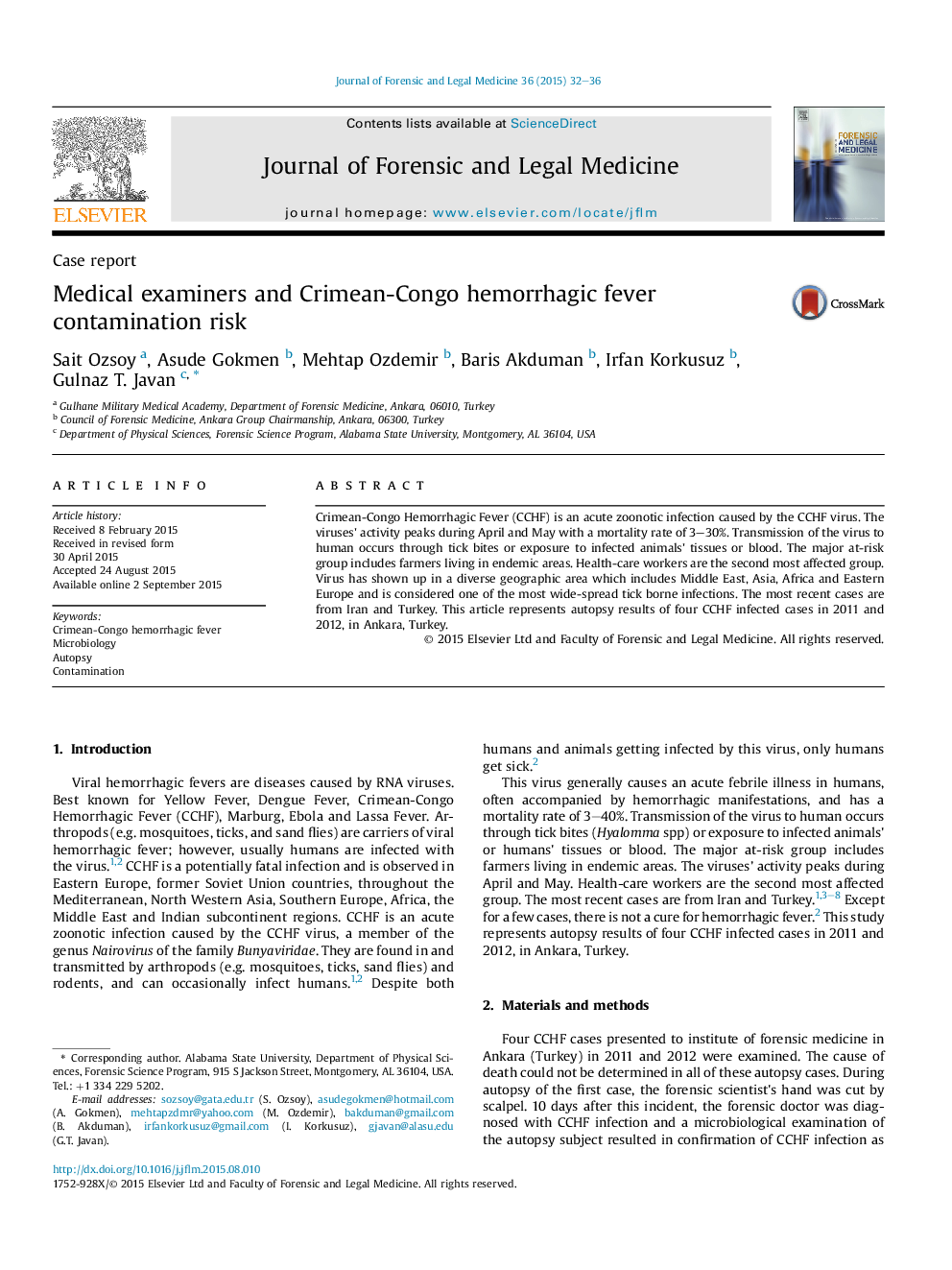| Article ID | Journal | Published Year | Pages | File Type |
|---|---|---|---|---|
| 101689 | Journal of Forensic and Legal Medicine | 2015 | 5 Pages |
•CCHF diagnosis was not a part of antemortem diagnosis.•Undiagnosed CCHF cases place autopsy workers at risk.•Sharing autopsy findings with medical team helps them with future CCHF diagnosis.
Crimean-Congo Hemorrhagic Fever (CCHF) is an acute zoonotic infection caused by the CCHF virus. The viruses' activity peaks during April and May with a mortality rate of 3–30%. Transmission of the virus to human occurs through tick bites or exposure to infected animals' tissues or blood. The major at-risk group includes farmers living in endemic areas. Health-care workers are the second most affected group. Virus has shown up in a diverse geographic area which includes Middle East, Asia, Africa and Eastern Europe and is considered one of the most wide-spread tick borne infections. The most recent cases are from Iran and Turkey. This article represents autopsy results of four CCHF infected cases in 2011 and 2012, in Ankara, Turkey.
